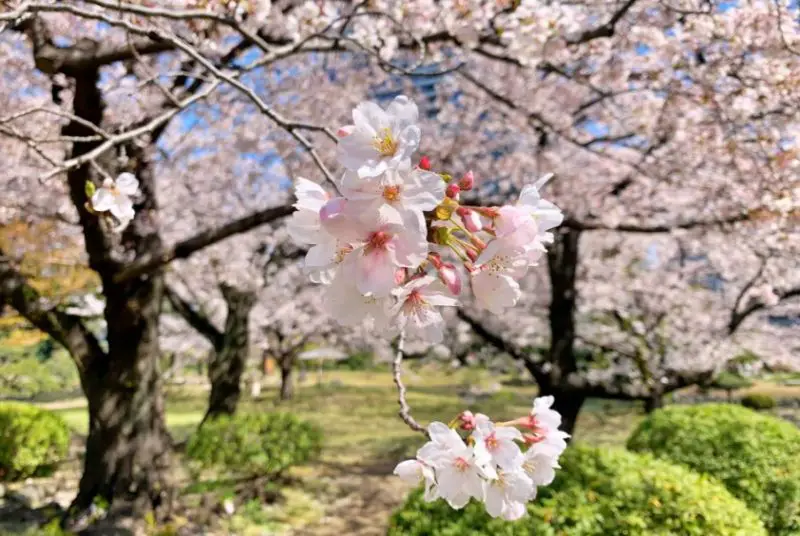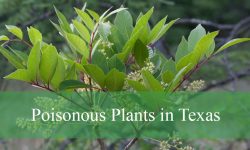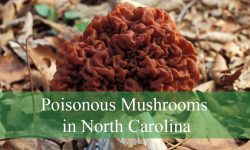The Yoshino Cherry Tree, scientifically known as Prunus × yedoensis, is a stunning flowering tree that originates from Japan. Celebrated for its delicate pink and white blossoms, it transforms landscapes into enchanting scenes during the spring months. The Yoshino Cherry Tree is not just a visual delight; it holds deep cultural significance in Japan and has become beloved in various parts of the world.
This comprehensive guide aims to equip you with all the essential information and expert tips for cultivating and caring for your own Yoshino Cherry Tree, ensuring it thrives and blooms beautifully in your garden.
The Beauty and Significance of Yoshino Cherry Trees

The Yoshino Cherry Tree is renowned for its spectacular floral displays that bloom in early spring, often just before the tree fully leafs out. The blossoms, with their subtle fragrance, have become symbols of renewal and the ephemeral nature of life. In Japan, these trees are a focal point during the cherry blossom festivals, known as Hanami, where people gather to appreciate their fleeting beauty.
Beyond Japan, Yoshino Cherry Trees have made their mark in cities like Washington, D.C., where the National Cherry Blossom Festival showcases these magnificent trees. Their elegance and aesthetic appeal make them popular choices for gardens and public parks worldwide.
General Characteristics
- Common Name: Yoshino Cherry Tree, Japanese Flowering Cherry
- Scientific Name: Prunus × yedoensis
- Hardiness Zones: 5 to 8 (USDA)
- Height: 20 to 30 feet
- Spacing: 20 to 40 feet apart
- Bloom Time: Early Spring (March to April)
- Flower Color: Pale Pink to White
- Native Area: Japan
Ideal Growing Conditions
Light Requirements
Yoshino Cherry Trees thrive in locations that receive ample sunlight. For optimal growth, they should be planted in areas that get at least six hours of direct sunlight each day. While they can tolerate partial shade, these trees are less likely to produce as many blossoms in shaded conditions. Proper sun exposure is critical for maintaining their vibrant flowers and overall health.
Soil Type
The foundation for a flourishing Yoshino Cherry Tree lies in well-drained soil. They prefer soil that is slightly acidic to neutral, ideally with a pH range of 6.0 to 7.0. Poor drainage can lead to root rot, so avoid planting in areas prone to waterlogging.
Incorporating organic matter like compost or well-rotted manure will enhance soil fertility and structure, ensuring that the tree has all the nutrients it needs. When planting, it’s beneficial to mix organic amendments into the soil to promote healthy root development.
Watering Needs
Proper watering is vital for the health of Yoshino Cherry Trees, particularly during their initial growth stages. Young trees need consistent moisture to establish a robust root system. Here are some watering tips:
- Deep Watering: Aim for deep, infrequent watering sessions rather than shallow, frequent ones. This encourages deeper root growth and enhances the tree’s resilience to drought.
- Moisture Monitoring: During dry spells, supplement rainfall to keep the soil moist but not waterlogged. Regularly check the moisture levels around the root zone.
- Mulching: Applying mulch around the base of the tree helps retain soil moisture, reduces evaporation, and inhibits weed growth, creating an ideal environment for the tree to thrive.
Temperature and Humidity
Yoshino Cherry Trees are adaptable to a range of temperatures but prefer moderate conditions. They can withstand cold winters typical of USDA Zone 5 and thrive in milder climates found in Zone 8. Although these trees can tolerate varying humidity levels, they flourish best in regions with moderate humidity. Adequate air circulation is essential, particularly in humid conditions, to prevent mold or mildew from developing on leaves and blossoms.
Nutrient Requirements
Fertilizing
While mature Yoshino Cherry Trees are relatively low-maintenance, they benefit from regular fertilization. A balanced, slow-release fertilizer with an N-P-K (Nitrogen-Phosphorus-Potassium) ratio, such as 10-10-10, is ideal. Here’s how to approach fertilizing:
- Timing: Fertilize in early spring as buds begin to swell. This timing ensures that the tree receives the necessary nutrients for the growing season.
- Avoid Late Fertilization: Refrain from fertilizing in late summer or fall, as this can promote late-season growth, making the tree more vulnerable to frost damage.
Pruning
Pruning is an essential part of Yoshino Cherry Tree care. Proper pruning helps maintain the tree’s shape, promotes healthy growth, and encourages abundant flowering.
- When to Prune: The best time to prune is late winter or early spring, after the flowering season. Pruning during dormancy minimizes stress on the tree.
- What to Remove: Start by removing dead, diseased, or damaged branches. Thin out the canopy by selectively removing some branches to enhance light penetration and air circulation.
Overwintering Yoshino Cherry Trees
As deciduous trees, Yoshino Cherry Trees enter a state of dormancy during the winter months. Preparing them for winter is essential for their survival and vitality in the spring.
Winter Protection Tips:
- Mulching: Create a layer of mulch around the base of the tree to insulate the roots and regulate soil temperature.
- Wrapping: In colder regions, wrap the trunk with burlap or tree wrap to protect it from winter sunscald, which can damage the bark.
- Pruning Before Winter: Remove any dead or diseased branches before winter to improve the tree’s appearance and prevent breakage from accumulated snow or ice.
Planting Yoshino Cherry Trees
Planting a Yoshino Cherry Tree is a rewarding experience that allows you to enjoy its beauty for years to come. Follow these steps for successful planting:
Step 1: Selecting the Location
Choose a sunny spot in your garden that receives at least six hours of direct sunlight daily. Ensure the soil is well-drained and free of waterlogging.
Step 2: Digging the Hole
Dig a hole that is twice the width of the root ball and the same depth. Loosen the soil at the bottom of the hole to promote root growth.
Step 3: Preparing the Tree
Remove the tree from its container and gently loosen any tightly bound roots. Place the tree in the center of the hole, ensuring that the root flare (where the roots meet the trunk) is level with the soil surface.
Step 4: Backfilling and Watering
Backfill the hole with soil, gently tamping it down to eliminate air pockets. Water the tree thoroughly after planting to settle the soil around the roots.
How to Propagate Yoshino Cherry Trees
If you wish to expand your Yoshino Cherry Tree collection, several propagation methods can be employed, including grafting, air layering, and softwood cuttings.
Propagation through Grafting
- Gather Materials: Select a healthy branch (scion) and a compatible rootstock.
- Make Clean Cuts: Use a sterilized knife to create clean diagonal cuts on both the scion and rootstock.
- Join Together: Align the cambium layers and secure with grafting tape.
- Seal and Monitor: Apply grafting wax to seal the grafted area, then monitor for new growth.
Propagation through Air Layering
- Select a Branch: Choose a healthy branch to propagate.
- Make an Incision: Create a small cut on the underside of the branch and apply rooting hormone.
- Wrap with Moss: Surround the cut with moist sphagnum moss and secure it.
- Monitor Root Development: Once roots form, cut below the rooted area and transplant.
Propagation through Softwood Cuttings
- Select Cuttings: Choose 4 to 6-inch healthy branches during early summer.
- Prepare the Cuttings: Remove lower leaves and dip the cut end in rooting hormone.
- Plant in Soil: Insert the cuttings into a pot filled with well-draining soil and cover with a plastic bag to retain humidity.
Common Pests and Diseases
Yoshino Cherry Trees can encounter various pests and diseases that threaten their health. Some common issues include:
Pests
- Aphids: These small insects can weaken the tree by sucking sap. Regular inspections and natural insecticides can help manage their populations.
- Caterpillars: Keep an eye out for caterpillars that may defoliate the tree. Handpicking or using organic pesticides can help control them.
Diseases
- Fungal Infections: Overly wet conditions can lead to fungal diseases. Ensure proper drainage and air circulation to minimize the risk.
- Bacterial Canker: This disease can cause cankers on branches. Regular pruning and maintaining tree health can prevent this issue.
Conclusion
Growing and caring for a Yoshino Cherry Tree is a truly rewarding experience that adds timeless beauty to your garden. By following the care tips in this guide, you’ll help your tree thrive, rewarding you with stunning blossoms each spring. Take pride in nurturing this graceful tree, and enjoy the transformation it brings to your garden, turning it into a breathtaking scene every year.






